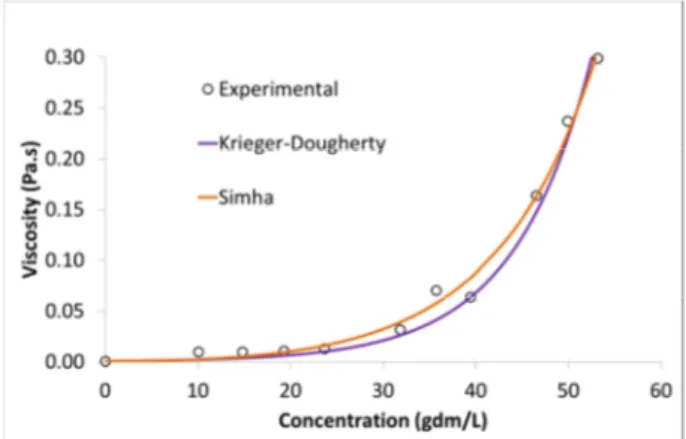O
pen
A
rchive
T
OULOUSE
A
rchive
O
uverte (
OATAO
)
OATAO is an open access repository that collects the work of Toulouse researchers and
makes it freely available over the web where possible.
This is an author-deposited version published in :
http://oatao.univ-toulouse.fr/
Eprints ID : 18019
To cite this version : Le, Tuan and Anne-Archard, Dominique and
Coma, Véronique and Cameleyre, Xavier and Lombard, Eric and To,
Kim Anh and Pham, Tuan Anh and Nguyen, Tien-Cuong and
Fillaudeau, Luc In-situ viscometry during hydrolysis of lignocellulosic
materials by single and cocktail enzymatic activities: from material
impact to viscosity overshoot. (2017) In: 16ème Congrès de la Société
Française de Génie des Procédés, 11 July 2017 - 13 July 2017 (Nancy,
France). (Unpublished)
Any correspondence concerning this service should be sent to the repository
administrator:
staff-oatao@listes-diff.inp-toulouse.fr
IN-SITU VISCOMETRY DURING HYDROLYSIS OF LIGNOCELLULOSIC MATERIALS BY
SINGLE AND COCKTAIL ENZYMATIC ACTIVITIES: FROM MATERIAL IMPACT TO
VISCOSITY OVERSHOOT
Tuan Le1,2,4, Dominique Anne-Archard3,4, Véronique Coma5, Xavier Cameleyre1, Eric Lombard1, Kim Anh To2, Tuan Anh Pham2, Tien Cuong Nguyen1,2, Luc Fillaudeau1,4*.
1- Laboratoire d’Ingénierie des Systèmes Biologiques et des Procédés (LISBP), Université de Toulouse; INSA; INRA UMR792, CNRS UMR5504, Toulouse, France.
2- Center for Research and Development in Biotechnology (CRDB), Schools of Biotechnology and Food Technology (SBFT), Hanoi University of Science and Technology, Hanoi, Viet Nam.
3- Institut de Mécanique des Fluides de Toulouse (IMFT) - Université de Toulouse, CNRS-INPT-UPS, Toulouse, France.
4- Fédération de Recherche FERMAT (Fluides, Energie, Réacteurs, Matériaux et Transferts), Université de Toulouse, CNRS, INPT, INSA, UPS, Toulouse, France.
5- Laboratoire de Chimie des Polymères Organiques (LCPO), Bordeaux, France. Email of corresponding author: luc.fillaudeau@insa-toulouse.fr
Keywords: lignocellulose substrate, in-situ rheometry, hydrolysis, pure activity, enzymatic cocktail.
Suspension viscometry
Rheological characterization of lignocellulosic suspension is a fundamental research to overpass physical limitations during enzymatic hydrolysis. In this study, the rheological properties of lignocellulosic suspensions (filter paper - FP, paper pulp - PP and pretreated sugarcane bagasse - SCB) and their evolution during enzymatic hydrolysis were investigated by in-situ measurements. All tested suspensions behaved as shear thinning fluids and a critical concentration reflecting the change between diluted to semi-dilute regimes were identified. The relationship between substrate concentration and initial suspension viscosity was characterized using Krieger-Dougherty and Simha models with excellent accuracy (Figure 1).
Figure 1. Proposed viscosity models for SCB suspension at 100rpm.
Impact of enzyme loading and cellulase activities
Single (endo-glucanase), mixed (endo-glucanase, exo-glucanase and β-glucosidase) and commercial cocktail (C-tec2, Novozymes) enzyme activities were evaluated for liquefaction ability in semi-dilute conditions (1.5 to 2 times higher than critical concentrations). For Ctec2, the liquefaction efficiency was proportional to enzyme-to-substrate ratio. However experimental results confirmed that only endo-glucanase played a key role in the liquefaction mechanism and kinetics whereas exo-endo-glucanase and
β-glucosidase contributions remain negligible. In the FP and PP slurries, single endo-glucanase strongly reduced suspension viscosity by 55% and 34% after 24h compared to the blank experiment, respectively. In the sugarcane bagasse slurries, a swelling phenomenon of suspension was observed
with all tested activities. It led to a significant overshoot in viscosity during the first stage of hydrolysis. This phenomenon was assumed to the separation of agglomerates into individual fragment under enzymatic actions.
Suspension rheological behavior
An alternative approach to investigate and to follow the evolution of rheological behavior during enzymatic hydrolysis was proposed and validated. The mixing rate was periodically increased from 100 to 125 rpm during 60s, the real-time and in-situ data (torque, mixing rate) permitted to evaluate power-law index under laminar and transitional flow regimes. A decrease in shear-thinning properties during enzymatic hydrolysis was finely quantified and correlated with biochemical kinetics and yields (Figure 2).
Figure 2. Evolution of flow behavior index (n) for FP 1.5% w/v (A) and PP 3%w/v (B) as a function of time. E/S ratios for G1, G2+G3 and G1+G2+G3 are equivalent to 0.3 FPU of Ctec2/g cellulose.
Kinetics modeling of viscosity
The viscosity-hydrolysis time relationship was modeled in order to predict the liquefaction progress during enzymatic hydrolysis of the lignocellulose substrate. Exponential (1) and power (2) equations were used for this kinetics modeling. Both models showed excellent accurate with a correlation coefficient R2 greater than 0.96 in all cases (Figure 3).
(1)
(2)
Figure 3. Suspension viscosity at differences enzyme loading for FP 1.5%w/v (A) and PP1.5%w/v (B). Predicted curves were plotted in full line for power equation and dash line for exponential equation. Experimental data were simplified to 5 points per hour.

